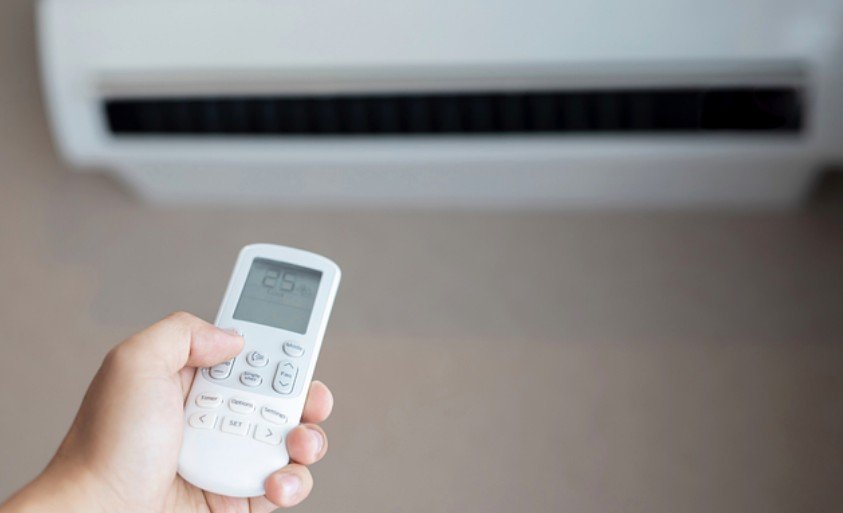
When the mercury rises, every Aussie knows the relief of stepping into a cool, air-conditioned home. But here’s the catch, if you don’t clean your air conditioner, it won’t cool properly, it will chew through electricity, and it may even give up on you when you need it most. Regular cleaning keeps your unit efficient, improves the air quality in your home, and saves you money on power bills.
Here are seven straightforward cleaning tips every Australian homeowner should follow.
Always cut the power before you start. Switch the unit off at the wall and, if possible, flick the circuit breaker as well. Air conditioners run on electricity, and even a quick wipe-down can go wrong if the system’s still live. Once you’ve switched it off, you can clean without risking a shock or damaging the system.
Filters clog up fast. Dust, pet hair, pollen, and even coastal salt collect on them and block airflow. A clogged filter forces the unit to work harder, which means higher power bills. It also blows dirty air back into your home.
Most manufacturers recommend cleaning the filters every month or two during summer. Here’s how you do it:
Mr Emergency Air Conditioning suggests cleaning your filters every month or two, and swapping out disposable ones every three to six months. Keeping filters clean can improve efficiency by up to 15 per cent, a big difference when you’re running the aircon daily.
Dust loves to settle on vents and louvres. When the fan kicks in, that dust blows straight into your living room. You’ll notice more sneezing, itchy eyes, or just that “stale air” feeling.
Grab a damp microfibre cloth and wipe the vents and louvres. For tricky corners, a soft brush or even a paintbrush works well. Move the louvres up and down to check they aren’t jammed. Keeping these clean ensures better airflow and fresher air.
The outdoor condenser does the heavy lifting, and it can’t do its job if leaves, grass, or dirt clog it up. Many Aussie homes have condensers sitting near fences, under decks, or next to garden beds, all spots where debris builds up quickly.
Tidy it up by:
Good airflow around the condenser keeps the compressor cool. Since the compressor is the most expensive part to replace, a little cleaning here saves a lot of money later.
Air conditioners pull moisture out of the air. That water drains through a pipe, usually leading outside. If the line clogs with dirt or algae, the water backs up. You’ll end up with leaks, stains on your wall, or even mould.
Check the drain outlet outside your home. Water should drip freely when the unit runs. If it doesn’t, flush the line with warm soapy water. For stubborn blockages, a wet-dry vacuum does the trick. In humid regions like Queensland or the Top End, check this more often because drains block faster.
Cleaning time doubles as inspection time. As you wipe and clear the unit, notice what you smell and hear.
Don’t ignore these signs. They tell you the unit needs professional attention before it fails completely.
You can handle basic cleaning, but you can’t reach everything inside the system. Coils, fans, and refrigerant levels need a trained technician. A licensed aircon specialist will:
Schedule a professional service once a year, ideally in spring. That way, your system is in top condition before summer hits hard.
After cleaning, keep an eye on performance and energy use. If your aircon still struggles, runs constantly, or sends power bills soaring, it may be time for an upgrade. Newer models come with better energy star ratings and inverter technology. Even jumping from a 2-star to a 5-star system can save hundreds on annual running costs in long summers.
Aircon cleaning isn’t just about comfort, it’s about health, safety, and cost savings. Here’s why it matters:
Think of it the same way you think about servicing your car. Skipping maintenance costs more in the long run.
Air conditioners aren’t a luxury, they’re essential. By cleaning filters, vents, outdoor units, and drain lines, you keep your system running efficiently and your home comfortable. Add in an annual professional service, and you’ll enjoy cool, clean air without nasty surprises on your electricity bill.
So, before summer arrives, grab a cloth, check your filters, and give your aircon some attention. A little effort now means fewer headaches later and a much cooler home when the heatwave rolls in.
Eliminate Stressful Showings and Get Immediate Cash from Your Westwego House
December 4, 2025The Top 5 Dishwasher Faults Perth Technicians See Every Week
November 26, 20255 Reasons Perth Builders Recommend Ziptrak for Alfresco Designs
November 26, 2025How to Build a Designer Bathroom on a Warehouse Budget
November 26, 2025NexdiLTD.com Review: Learning to Trade with Nexdi’s Educational Resources
November 19, 2025